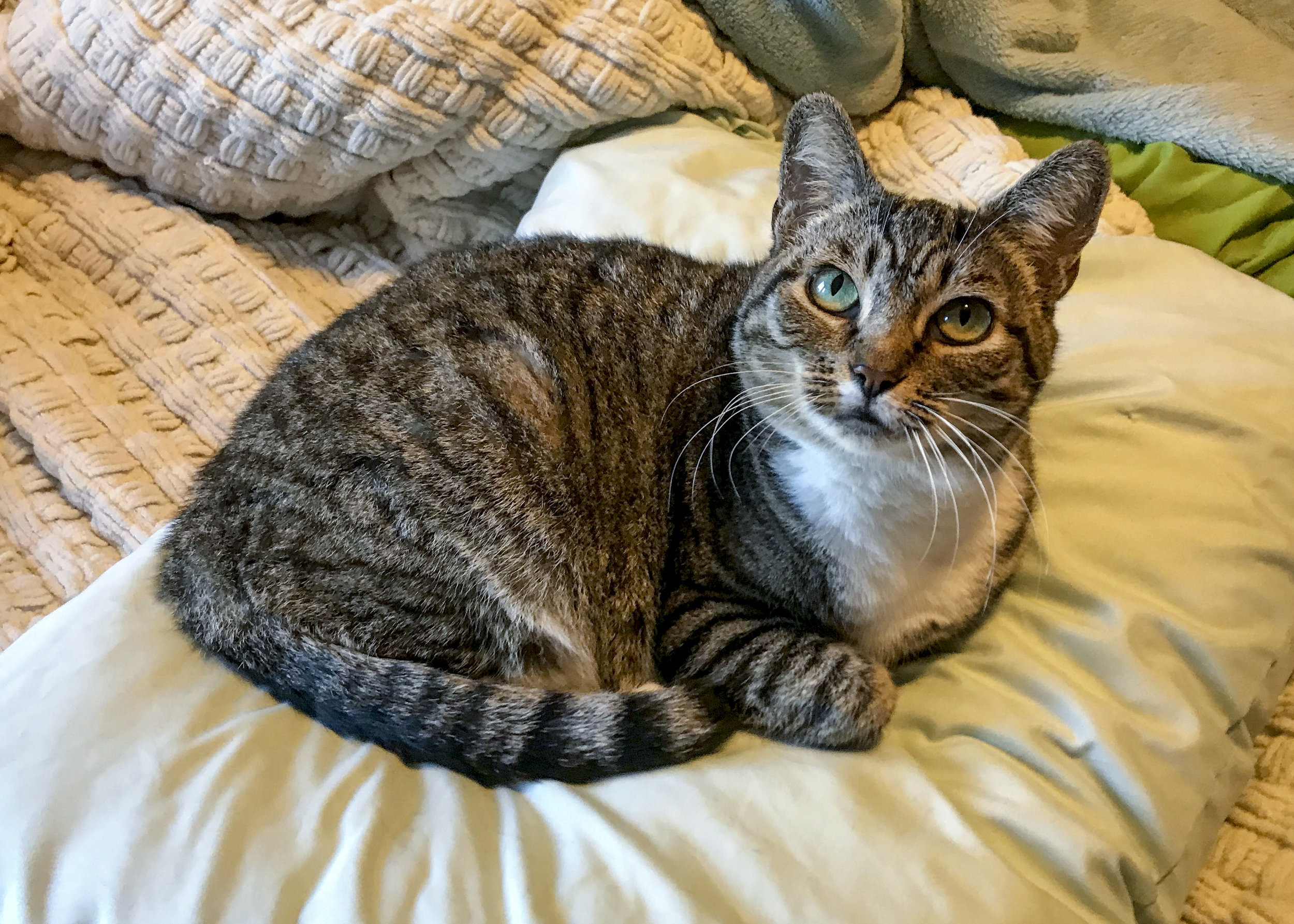

It spreads across the first three of the stripes. Tabby has a slight tannish discoloration on her left side. Tabby has another color issue, but it is SO MUCH less noticeable in person than it looks in my fifth image. And there is also nice contrast between those two main colors and Tabby’s white parts, which are, I believe, close to their original color. Because her stripes are still very dark, there is nice contrast between those colors. Although the underlying color of the top of her back and her sides is still definitely gray, it has faded somewhat in the more than 60 years since she left Giengen. There are two things I want to tell you about Tabby’s color. This adorable and rare kitten has a few issues, but she is nonetheless a collection-worthy Steiff feline, especially if, like me, Steiff cats are your main collecting interest. In fact, Tabby is a little shorter, measuring 9 cm. Tabby’s article number was 1310,0, in which the “10” indicates her catalogued height to the top of her head in centimeters.

The 1959 and later Tabbys have a mostly-white body with two small areas of stripes encircling their backs and sides. You can see that Tabby’s stripes radiate outwards from a thick black “line” extending the length of her back, whose underlying color is gray. I guess I should call this one the “toddler.” :-) The striping patterns of these Tabbys differ from the later-produced versions of this cat. I have referred to her tiny 7-cm sister as the “newborn” Tabby. Tabby is the next-to-smallest size of the coveted “gray” Steiff Tabby cat. This model of Tabby was made from 1949 to 1958, but her raised script button means she was probably made no earlier than 1951. Tabby was made starting early after the end of WWII, but her continuous stripe design is from decades earlier. I am always delighted to help one of these early postwar “Tabby” cats (in design as well as name) find a new home.


 0 kommentar(er)
0 kommentar(er)
